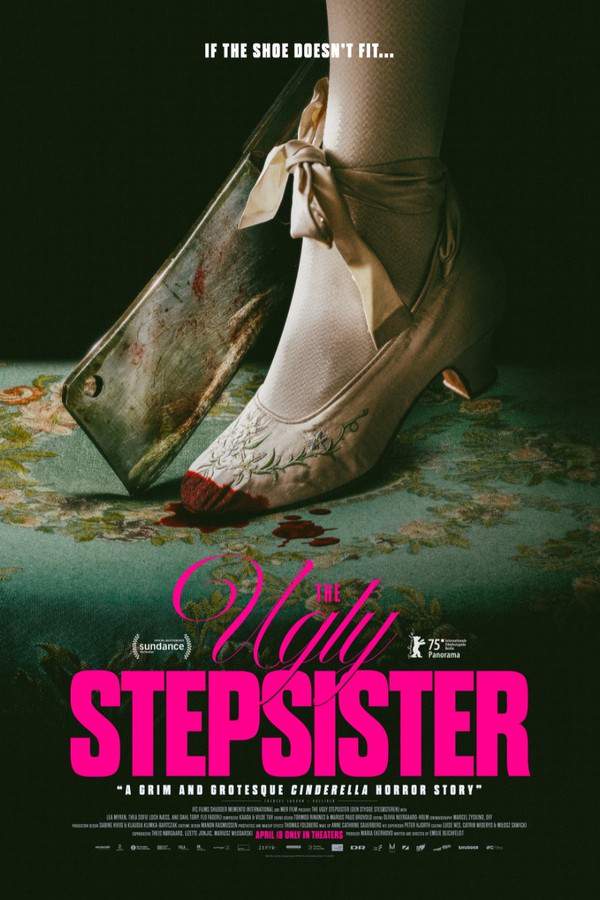What's After the Blog?
Opinions • reception
The Ugly Stepsister Review: Analyzing User and Critic Opinions on Reception and Performance (2025)
Dive into the contrasting opinions surrounding 'The Ugly Stepsister' as we explore fan reactions, critic reviews, and the film's storytelling and performance within the franchise context. Discover what audiences and critics are saying about this captivating tale.
June 9, 2025

Movies mentioned in this article
In-Depth Reviews and Opinions on The Ugly Stepsister (2025)
Introduction to The Ugly Stepsister: A Twisted Fairytale Exploration
The release of The Ugly Stepsister, directed by Emilie Blichfeldt, has sparked intense discussions among audiences and critics alike. This innovative reimagining of the classic Cinderella tale delves deep into themes of beauty, trauma, and transformation. With vibrant cinematography and a provocative narrative, the film’s reception has varied widely, leading to an intriguing tapestry of reviews and user opinions. Let’s explore the sentiment surrounding this unconventional film and how it stands against traditional fairy tales.
Critics’ Mixed Reactions to The Ugly Stepsister
Critics have largely praised Blichfeldt’s daring vision. The Irish Times noted how the film “roasts conventional heroines and female beauty standards,” illuminating its dark humor and ethical interrogation of fairy tale norms. However, the prestigious New York Times offered an equally glowing remark, calling it “slyly funny and visually captivating,” emphasizing its artistic and satirical flair. In contrast, Little White Lies perceived the film as “ultimately flimsy,” implying that while it tackles significant issues, it doesn’t quite land its message in a satisfying manner.
These contrasting insights highlight the film’s ambitious scope, with its reception hinging on individual expectations. As Movie Nation suggested, the movie’s “cringe-worthy” moments challenge traditional storytelling, implying that the courage to tackle controversial topics overshadows its execution. The general sentiment leans toward a mixed affection, wherein fans appreciate the effort to subvert norms while acknowledging its narrative shortcomings.
Audience Perception: A Blend of Appreciation and Criticism
Audience responses to The Ugly Stepsister demonstrate varying levels of satisfaction, ranging from ecstatic praise to more reserved critique. A user from FuzzyFriendsHQ exclaimed, “A nightmarish, visually striking descent into trauma and transformation,” which resonates with the film’s horror aesthetics. However, other viewers like royalguy07 found themselves surprised by the film’s quality, viewing it through a lens of unexpected production value. This duality in audience perspective reflects the film’s complexity; it’s a story that dares to be brutal and honest about its inspirations while also retaining a dark fantasy allure.
Certain audiences embraced the film’s grotesque approach wholeheartedly. Users like saimariejohnson celebrated its willingness to draw inspiration from the original, more gruesome fairy tales, reiterating that “a good dark fantasy story that draws on a classic is always fun.” Meanwhile, others voiced discomfort with specific elements, such as gratuitous content and inconsistency in storytelling, emphasizing that while the film’s intentions are noble, execution is somewhat lacking.
Thematic Analysis: Reimagining Beauty and Trauma in The Ugly Stepsister
At the core of The Ugly Stepsister lies a bold exploration of beauty standards and the trauma associated with them. Blichfeldt’s approach draws from horror elements to delve into the uncomfortable truths behind fairy tales. As noted by Slant Magazine, her work tests the limits of discomfort, pushing the audience’s reactions with each unfolding scene. Critics like RogerEbert.com drew attention to this confrontational nature, referring to the film’s “burn it all down” strategy as both disruptive and revelatory.
Such thematic depth is met with polar opinions. Some celebrate the narrative’s courage to confront social issues, while others argue that the film’s execution may not transcend its potential. The contrast between critics like The Guardian, who heralded it as a “debut” with elegance, and those who found fault in the narrative structure, offers rich ground for discussion. The reviews highlight that The Ugly Stepsister aims to be more than a retelling; it’s an examination of the struggles that accompany societal beauty standards, resonating with audiences facing similar dilemmas.
Conclusion: The Ugly Stepsister - A Provocative Tale Sparking Conversation
In conclusion, the reception of The Ugly Stepsister reveals a complex interplay of admiration and critique. While many viewers appreciate Blichfeldt’s vision for subverting fairy tale conventions, others question the film’s narrative coherence and overall effectiveness. Ultimately, the film challenges traditional notions of beauty and empowerment, striking a chord with those willing to engage with its provocative themes.
If you’re interested in delving deeper into The Ugly Stepsister, you can visit the What’s After the Movie page for comprehensive summaries, box office insights, and the latest updates regarding this captivating film. Additionally, check out our quiz page and awards page to enhance your viewing experience further.
| Resource | Link |
|---|---|
| Metacritic | Metacritic |
| Rotten Tomatoes | Rotten Tomatoes |
| IMDb | IMDb |
| TMDB | TMDB |
| Wikipedia | Wikipedia |
| Just Watch | Just Watch |
| Box Office Mojo | Box Office Mojo |
| Letterboxd | Letterboxd |
| Movie Insider | Movie Insider |
Continue reading

What's After the Movie?
Not sure whether to stay after the credits? Find out!
Explore Our Movie Platform
New Movie Releases (2025)
Famous Movie Actors
Top Film Production Studios
Movie Plot Summaries & Endings
Major Movie Awards & Winners
Best Concert Films & Music Documentaries
Movie Collections and Curated Lists
© 2025 What's After the Movie. All rights reserved.








